Philips 2008 Annual Report Download - page 32
Download and view the complete annual report
Please find page 32 of the 2008 Philips annual report below. You can navigate through the pages in the report by either clicking on the pages listed below, or by using the keyword search tool below to find specific information within the annual report.-
 1
1 -
 2
2 -
 3
3 -
 4
4 -
 5
5 -
 6
6 -
 7
7 -
 8
8 -
 9
9 -
 10
10 -
 11
11 -
 12
12 -
 13
13 -
 14
14 -
 15
15 -
 16
16 -
 17
17 -
 18
18 -
 19
19 -
 20
20 -
 21
21 -
 22
22 -
 23
23 -
 24
24 -
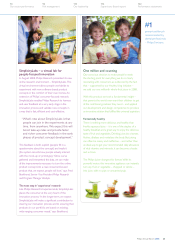 25
25 -
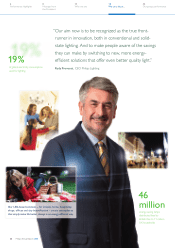 26
26 -
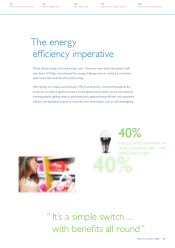 27
27 -
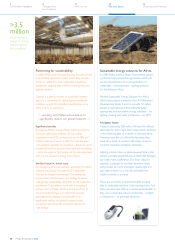 28
28 -
 29
29 -
 30
30 -
 31
31 -
 32
32 -
 33
33 -
 34
34 -
 35
35 -
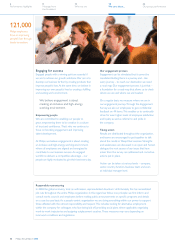 36
36 -
 37
37 -
 38
38 -
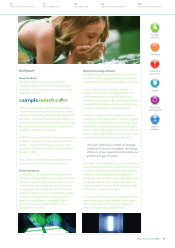 39
39 -
 40
40 -
 41
41 -
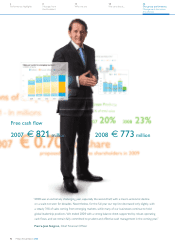 42
42 -
 43
43 -
 44
44 -
 45
45 -
 46
46 -
 47
47 -
 48
48 -
 49
49 -
 50
50 -
 51
51 -
 52
52 -
 53
53 -
 54
54 -
 55
55 -
 56
56 -
 57
57 -
 58
58 -
 59
59 -
 60
60 -
 61
61 -
 62
62 -
 63
63 -
 64
64 -
 65
65 -
 66
66 -
 67
67 -
 68
68 -
 69
69 -
 70
70 -
 71
71 -
 72
72 -
 73
73 -
 74
74 -
 75
75 -
 76
76 -
 77
77 -
 78
78 -
 79
79 -
 80
80 -
 81
81 -
 82
82 -
 83
83 -
 84
84 -
 85
85 -
 86
86 -
 87
87 -
 88
88 -
 89
89 -
 90
90 -
 91
91 -
 92
92 -
 93
93 -
 94
94 -
 95
95 -
 96
96 -
 97
97 -
 98
98 -
 99
99 -
 100
100 -
 101
101 -
 102
102 -
 103
103 -
 104
104 -
 105
105 -
 106
106 -
 107
107 -
 108
108 -
 109
109 -
 110
110 -
 111
111 -
 112
112 -
 113
113 -
 114
114 -
 115
115 -
 116
116 -
 117
117 -
 118
118 -
 119
119 -
 120
120 -
 121
121 -
 122
122 -
 123
123 -
 124
124 -
 125
125 -
 126
126 -
 127
127 -
 128
128 -
 129
129 -
 130
130 -
 131
131 -
 132
132 -
 133
133 -
 134
134 -
 135
135 -
 136
136 -
 137
137 -
 138
138 -
 139
139 -
 140
140 -
 141
141 -
 142
142 -
 143
143 -
 144
144 -
 145
145 -
 146
146 -
 147
147 -
 148
148 -
 149
149 -
 150
150 -
 151
151 -
 152
152 -
 153
153 -
 154
154 -
 155
155 -
 156
156 -
 157
157 -
 158
158 -
 159
159 -
 160
160 -
 161
161 -
 162
162 -
 163
163 -
 164
164 -
 165
165 -
 166
166 -
 167
167 -
 168
168 -
 169
169 -
 170
170 -
 171
171 -
 172
172 -
 173
173 -
 174
174 -
 175
175 -
 176
176 -
 177
177 -
 178
178 -
 179
179 -
 180
180 -
 181
181 -
 182
182 -
 183
183 -
 184
184 -
 185
185 -
 186
186 -
 187
187 -
 188
188 -
 189
189 -
 190
190 -
 191
191 -
 192
192 -
 193
193 -
 194
194 -
 195
195 -
 196
196 -
 197
197 -
 198
198 -
 199
199 -
 200
200 -
 201
201 -
 202
202 -
 203
203 -
 204
204 -
 205
205 -
 206
206 -
 207
207 -
 208
208 -
 209
209 -
 210
210 -
 211
211 -
 212
212 -
 213
213 -
 214
214 -
 215
215 -
 216
216 -
 217
217 -
 218
218 -
 219
219 -
 220
220 -
 221
221 -
 222
222 -
 223
223 -
 224
224 -
 225
225 -
 226
226 -
 227
227 -
 228
228 -
 229
229 -
 230
230 -
 231
231 -
 232
232 -
 233
233 -
 234
234 -
 235
235 -
 236
236 -
 237
237 -
 238
238 -
 239
239 -
 240
240 -
 241
241 -
 242
242 -
 243
243 -
 244
244 -
 245
245 -
 246
246 -
 247
247 -
 248
248 -
 249
249 -
 250
250 -
 251
251 -
 252
252 -
 253
253 -
 254
254 -
 255
255 -
 256
256 -
 257
257 -
 258
258 -
 259
259 -
 260
260 -
 261
261 -
 262
262 -
 263
263 -
 264
264 -
 265
265 -
 266
266 -
 267
267 -
 268
268 -
 269
269 -
 270
270 -
 271
271 -
 272
272 -
 273
273 -
 274
274 -
 275
275 -
 276
276
 |
 |

Addressing indoor air quality
While the effects of outdoor air pollution have been
well documented, relatively little attention has been
paid to the quality of indoor air. Figures released by
the World Health Organization in 2007 claimed that
in a number of countries – including several emerging
economies – indoor air pollution is responsible for a
total of 1.2 million deaths a year. Children, WHO
noted, were impacted even more than adults in
succumbing to acute respiratory conditions
attributed to indoor air pollution.
These alarming statistics played a significant part in
the creation of Philips’ new Water & Air category.
“More than 70% of consumers feel that the air
quality will impact their long-term health,” says
Sridhar Kumaraswamy, the Water & Air category
leader. “This same research also indicated that about
half of households are not satisfied with their indoor
air quality. We have chosen to address its provision
with a very market-specific approach for our Clean
Air Systems range, based on different priorities in
each market.”
European air quality under threat
Philips’ insight has shown that Europeans are mostly
concerned about the amount of dust and especially
allergens in indoor air. “55% say they have a problem
with it, even though only 5% of European households
own an air cleaner,” says Sridhar. Europe’s growing city
populations – two-thirds of Europeans will be city
dwellers by 2050 – are being increasingly exposed to a
whole range of pollutants, from harmful gases, viruses
and bacteria, to fine dust, pollen and cooking waste.
The design and construction of modern homes is
also less effective in dispersing indoor pollutants.
“ With more people than ever before living
in cities in both the developed world and in
emerging markets, there is greater concern
about the impact city living has on health
and well-being.”
Emerging markets facing environmental challenges
In emerging markets like China, the situation is
somewhat different: “People living in China’s cities
face the same indoor air pollution issues as anywhere
else – like dust, chemical emissions, pollen, tobacco
smoke, bacteria and viruses,” says Sridhar. “However,
the expanding economy has created additional
environmental challenges as a result of things like
construction projects and increased car ownership.”
Awareness of domestic air quality in China is growing,
and interest in buying an air cleaner is high (around
85% of households). In China, Philips has focused on
addressing family health with its Clean Air Systems.
“In a big city like Shanghai,” notes Sridhar, “people
might be inhaling over 50 million particles with every
breath. Since children breathe even more air than
adults – up to twice as much – they will inhale even
higher levels of airborne contaminants. So, every
breath that a child takes, at home and outdoors,
can affect his or her growth and development.”
1.6
billion
invested in R&D
in 2008
Philips Annual Report 200832
18
We care about...
8
Message from
the President
6
Performance highlights
14
Who we are
42
Our group performance
